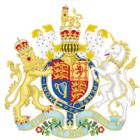Representation of the People (Ireland) Act 1832 facts for kids
| Act of Parliament | |

|
|
| Long title | An Act to amend the representation of the people in Ireland. |
|---|---|
| Citation | 2 & 3 Will. 4. c. 88 |
| Territorial extent | Ireland |
| Dates | |
| Royal assent | 7 August 1832 |
| Other legislation | |
| Repealed by | Electoral Act 1963 |
| Relates to | Parliamentary Boundaries (Ireland) Act 1832, Reform Act 1832, Scottish Reform Act 1832 |
|
Status: Repealed
|
|
The Representation of the People (Ireland) Act 1832, often called the Irish Reform Act 1832, was an important law passed in the United Kingdom. It made big changes to how people voted in Ireland. This law was introduced around the same time as the Reform Act 1832, which changed voting rules in England and Wales.
This Act was part of a larger effort to update the voting system across the UK. It aimed to make elections fairer and give more people a say in who represented them in Parliament.
Contents
What Was the Irish Reform Act of 1832?
The Irish Reform Act was a new law that changed how people in Ireland could vote. Before this Act, voting rules were very old and different in various places. This made it hard for many people to have their voices heard.
The main goal of the Act was to update these old rules. It wanted to make the voting system more modern and consistent across Ireland. This meant changing who could vote and how many representatives different areas had.
Ireland's Representatives Before 1832
From 1801, Ireland sent 100 members to the House of Commons. This is a part of the UK Parliament where elected representatives make laws. Each of Ireland's 32 counties sent two Members of Parliament (MPs).
Some cities also sent MPs. Dublin City and Cork City each sent two MPs. Other towns and Dublin University each sent one MP to Westminster, the home of the UK Parliament.
How the Act Changed Voting Areas
The 1832 Act increased the total number of MPs from Ireland to 105. This meant five more seats were added to Parliament.
New MPs were added for certain areas. Belfast, Galway, Limerick, and Waterford each gained a second MP. Dublin University also gained an extra MP.
Who Could Vote Before the Act?
Before 1832, the rules for who could vote were quite different. In counties, if you owned land worth at least 40 shillings (about £2), you could vote. This was known as a "40 shilling freehold."
For a long time, Catholics in Ireland were not allowed to be MPs. They could only vote from 1793. Then, in 1829, the Roman Catholic Relief Act 1829 was passed. This law finally allowed Catholics to become MPs.
However, on the same day, a new rule made it harder to vote in counties. You now needed to own land worth at least £10 to vote. This was a big increase from the old 40 shillings.
New Voting Rules After 1832
The 1832 law kept the £10 land ownership rule for county voters. But it also added some new ways for people to qualify to vote.
For example, if you rented land for a very long time (like 60 years or more) and it was worth £10, you could vote. If you rented land for at least 14 years and it was worth £20, you could also vote.
Voting in Towns and Cities
Before 1832, each town or city had its own voting rules. In some places, only members of the town council could vote. In others, a wider group of "freemen" (people with special rights in the town) and 40 shilling landowners could vote.
The number of voters in towns varied a lot. For example, in 1831, a special election in Bandon was decided by only 11 voters! But in 1832, an election in Dublin City had 4,550 votes. This shows how different the rules were.
The 1832 Act made voting rules more similar across towns. Now, if you lived in a property worth at least £10, you could vote. Also, "freemen" who got their status by birth or by completing an apprenticeship could vote. These freemen were often part of old trade groups called guilds.
Voting at Trinity College Dublin
Before 1832, only the leaders and scholars of Trinity College Dublin could vote for their MP. After 1832, any graduate of Trinity College who had a Master of Arts degree could vote.
Impact of the Reform Act
The 1832 Act also introduced a system for registering voters in Ireland. This helped to keep track of who was eligible to vote. Even after the Act, there were still big differences in the number of voters in different areas.
For example, in counties, County Sligo had 695 registered voters, while County Cork had 3,835. In towns, Lisburn had only 91 voters, but Dublin City had 7,008 voters.
The Parliamentary Boundaries (Ireland) Act 1832 was passed on the same day. This law set the exact borders for the voting areas in towns, making sure everyone knew where they could vote.
The Irish Reform Act of 1832 was eventually replaced by the Electoral Act 1963.
See also
- List of Acts of the Parliament of the United Kingdom
- Reform Acts
- Representation of the People Act

